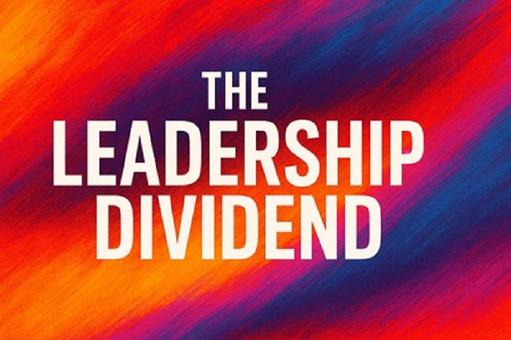- MedTech’s focus has shifted from patients to profits, creating tension for leaders
- Old governance models shaped by past crises need updating for patient-first accountability
- Industry mergers often reduce innovation, access, and frontline flexibility
- Investment trends now drive how leaders define success and value
- Healthcare is being reshaped, requiring leaders to balance profit, purpose, and trust
The MedTech Empire Wall Street Built
In 1975, when New York City nearly collapsed into bankruptcy, the crisis was widely seen as a failure of municipal governance. Under mayor Abraham Beame, the city had run out of money to pay for normal operating expenses, was unable to borrow more, and faced the prospect of defaulting on its obligations and declaring bankruptcy. A cautionary tale of overspending and fiscal mismanagement. But that moment marked something deeper and more enduring: a quiet revolution in power. As elected officials lost control, a new regime emerged. Financiers - bondholders, bankers, and fiscal monitors - stepped in, not just to rescue the city, but to impose a new logic of governance.
This was not just a bailout. It was a paradigm shift.
What unfolded in New York marked the genesis of a broader transformation: the entrenchment of financial discipline as a surrogate for democratic accountability. The city became a prototype for a governance model that privileged austerity over investment, efficiency over equity, and the primacy of financial metrics over public mission. Though rooted in a specific municipal crisis, this framework soon escaped the confines of city budgets. It spread first to other fiscally distressed governments - such as Cleveland and Philadelphia in the US and later crisis-hit municipalities abroad - before extending its reach into sectors once presumed insulated from financialisation, including public universities, healthcare systems, and cultural institutions.
One of the least examined, yet most consequential frontiers of this shift has been the MedTech industry.
At first glance, the connection seems tenuous. What does a municipal bond crisis have to do with catheters, diagnostics, or surgical robotics? Yet the logic that reshaped New York - centralised control, cost-cutting, consolidation, and the pursuit of scale - resurfaced, almost unchanged, in the private equity-driven transformation of MedTech beginning in the late 1990s. By then, the financial institutions and strategies forged during and after New York’s crisis had not only matured but become dominant, embedding themselves in the DNA of corporate restructuring.
Private equity firms deployed roll-up strategies: acquiring founder-led companies, standardising operations, and unlocking scale efficiencies. They brought professionalism and capital - but also imported a governance model rooted in financial return, where EBITDA trumped clinical value. Innovation became a function of exit multiples; patient outcomes became secondary to shareholder outcomes.
Over subsequent decades, this financialisation reshaped MedTech’s priorities so profoundly that today the industry often struggles to adapt to radical shifts: the accelerating rise of AI, volatile market conditions, the push toward value-based care, the growing influence of patient voices, the migration of care beyond hospitals, and the pivot from discrete devices to service platforms designed to manage entire patient journeys. What once promised discipline and efficiency has, in many respects, left the industry less agile when agility is most needed.
In this light, MedTech is not an anomaly - it is an heir. What began as an emergency intervention in New York metastasised into a blueprint for managing organisations and systems through capital markets. Wall Street did not just rescue a city; it rewrote the rules of who leads, who benefits, and how we define value in essential services. Today, the MedTech industry reflects that lineage: technologically advanced, investment-driven, and structured around financial imperatives rather than patient needs.
In this Commentary
This Commentary explores how financial logic reshaped the MedTech industry - from boardroom strategies to innovation pipelines - often prioritising efficiency and returns over care and clinical purpose. Tracing this shift to broader governance trends dating back to the 1970s, it calls for a reimagining of healthcare leadership that aligns capital with long-term value, public interest, and patient outcomes.
Finance as Operator, Not Just Capital
By the early 2000s, finance had transcended its traditional role as a provider of capital. Steeped in lessons from the 1975 New York fiscal crisis - when financiers supplanted elected officials to steer the city away from bankruptcy - finance houses and their personnel embraced a new sense of authority. What had once been an emergency intervention hardened into a governing philosophy: that markets, not politics, could impose discipline and deliver efficiency. Armed with this conviction, finance firms stepped off the sidelines and became operators - hands-on architects of strategy, structure, and scale. They fixed their gaze on fragmented, under-optimised sectors - medical devices - perceiving in them fertile ground for consolidation, control and ROI.
MedTech proved a lucrative target. Leveraged buyouts offered the machinery for rapid expansion, with private equity deploying capital to roll-up smaller players. Platform strategies (business models that facilitate interactions between two or more interdependent groups, typically consumers and producers) created vertically integrated giants with defensible moats, shielding them from competition and regulation. Behind the scenes, EBITDA engineering became an art form - recasting earnings, streamlining operations, and packaging firms for profitable exits.
Yet this transformation was not the natural evolution of a sector. It was the product of a broader ideological and financial shift - a governance model forged during a crisis. Just as Wall Street once demanded austerity and social service cuts in 1970s New York, the financial class of 2,000 brought a similar ethos to healthcare: prioritising investor returns over public good, capital efficiency over clinical efficacy.
What emerged was not a leaner, more “efficient” MedTech industry, but one increasingly governed by financial imperatives rather than medical needs. Finance did not just bankroll the future of healthcare - it remade it in its own image. The returns are undeniable. So are the costs. When medicine is run like a portfolio, the unsettling question is no longer just who profits - it is who, ultimately, is the patient?
|


















